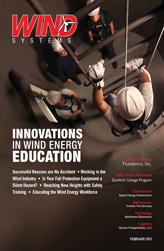A few years ago while teaching a graduate class in supply chain management at the local university, an inquisitive student asked me this, “Professor Graska, what is the one most important thing to understand about a supply chain?” I am not sure if he was trying to put me on the spot or was genuinely interested in an answer. It so happens I was prepared for the question, mostly through years of experience and some thoughtful professors that I had. “Well,” I said, “if there is only one thing that you learn in this class and always remember, it is this: It is the role that variability plays throughout the supply chain.”
Understanding where and how variability impacts the supply chain is key to improving the efficiency and responsiveness of it. It is really not a difficult concept to understand, but can be difficult to act upon. First let me give you my definition of variability. It is the gap between targeted expectations and actual results. And it can absolutely be measured. Also, I like to define efficiency in terms of cost and responsiveness as time, once again things that can be measured.
Let’s use building a wind farm to highlight what I mean. (OK, a teaching moment — once a teacher always a teacher.) Building a wind farm consists of many players, sequencing many parts, to meet a defined building schedule. I often liken these projects to military campaigns. Let’s even take this a couple of levels deeper and focus on the delivery of one component from the factory to the wind farm, in this case a nacelle. So one of the first measurable variable events is if the nacelle is available to for pick up as promised? If not, then how late will pick up be? And so the supply chain ripple begins with consequences down the chain. Now what happens if the truck does not show up on time? How late is it and again how does it affect the rest of the chain? For example, does it invalidate its permits? Does it reduce the amount of time the driver is allowed on the road? I think you can see where this is going. Each of these events has an expectation, each may have a tolerance and each can be measured. If the actual results do not meet expectations, there is price to pay either in cost (efficiency) or time (responsiveness). To limit the effects of variability in this example, steps need to be taken to insure that the nacelle is ready when promised and the truck shows up on time.
But even if the nacelle is available and the truck is on time, there are still other variables to consider. For example, are the lashing hardware to specification? Is the paperwork filled out correctly? This is very critical if the nacelle is crossing a border. Does the nacelle actual weight match the stated weight used for load calculation and permitting? I could go on and on, put hopefully you see my point. And for an entire wind farm, multiply the above example by thousands to understand the possible impact. No wonder the execution of building a wind farm is difficult.
A supply chain is made up of multitudes of events that can vary and result in reality not meeting expectations. Part of managing the supply chain is setting and understanding expectations or targets. And part of managing it is controlling the process allowing the results to meet the targets. If this sounds familiar, it is because we experienced it through TQM techniques, Six Sigma training, lean manufacturing and other programs that at the end of the day results in taking variability out of something. It’s application is no different when making a computer chip to moving a 200,000 pound nacelle. To be successful, you need to control the variance. It is both that simple and that difficult. The challenges are to understand all the events within the supply chain that can vary, how much variance can be tolerated, and measuring the variance.
So that student actually did me a favor. He reminded me of a key supply chain fundamental, and gave me an excellent teaching moment. And yes he got an A.


































